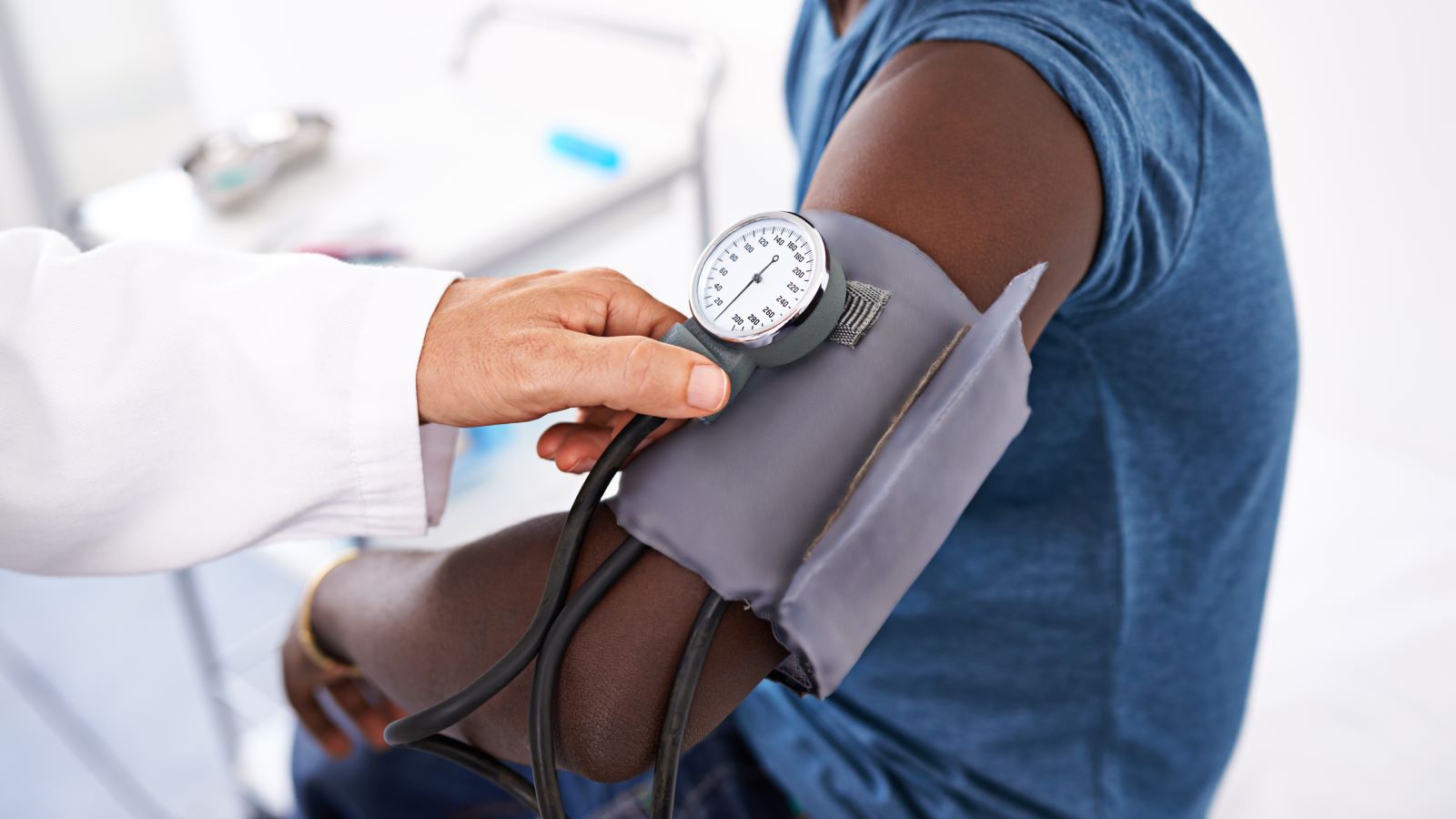<< Back
What Your Blood Pressure Says About Your Health

November 15, 2024
Your blood pressure isn’t just a number. It’s a window to your overall health — as long as you understand what it’s telling you.
Not sure where to start? We asked Emmanuel Egom, MD, a cardiovascular medicine specialist at Hartford HealthCare Heart & Vascular Institute, how you can better understand your blood pressure and manage it.
How to interpret your blood pressure reading.
Understanding your blood pressure starts with knowing the baseline.
Your blood pressure consists of two numbers:
- Systolic blood pressure (the top number) measures the pressure in your arteries when your heart beats
- Diastolic (the bottom number) measures it when your heart rests between beats.
According to guidelines from the American College of Cardiology and the American Heart Association, here’s how you can interpret your systolic and diastolic numbers
- Normal: Systolic < 120 mm Hg and Diastolic < 80 mm Hg
- Elevated: Systolic between 120-129 mm Hg and Diastolic < 80 mm Hg
- Hypertension Stage 1: Systolic between 130-139 mm Hg or Diastolic between 80-89 mm Hg
- Hypertension Stage 2: Systolic ≥ 140 mm Hg or Diastolic ≥ 90 mm Hg
> Related: Is It Normal to Have High Blood Pressure When You’re Older?
What to know if you have high blood pressure.
High blood pressure can develop for various reasons, including genetics, lifestyle factors such as high salt intake, alcohol consumption and physical inactivity, as well as chronic conditions like obesity, diabetes and other endocrine or kidney diseases.
“High blood pressure is often asymptomatic,” says Dr. Egom. “But in severe cases, it may present with warning signs like headaches, chest pain or vision changes.”
If left untreated, high blood pressure can lead to serious health risks, including:
- Heart disease
- Stroke
- Kidney damage
- Eye damage
“High blood pressure is a silent risk,” says Dr. Egom. “Without symptoms, people may overlook it, but untreated hypertension raises the risk of serious health issues.”
If your readings exceed 130/80 mmHg, regular check-ups are recommended to monitor and manage it.
“Lifestyle changes are the first line of treatment,” Dr. Egom adds. “For higher-risk patients, medication may be needed.”
> Related: These 6 Foods Can Lower Your Blood Pressure Naturally
What to know if you have low blood pressure.
While there’s no strict definition for low blood pressure (hypotension), it’s generally considered low when readings fall below 90/60 mmHg.
“What’s considered ‘too low’ can vary by person,” explains Dr. Egom. “Some people naturally have lower readings without health issues. But low blood pressure becomes a concern if it causes symptoms like dizziness, fainting, blurred vision or weakness—that’s when it’s time to see a doctor.”
Low blood pressure can result from:
- Dehydration
- Heart problems
- Endocrine disorders
- Certain medications
In the short term, it may increase fall risk, especially for older adults, while long-term effects could include inadequate blood flow to organs. Treatment typically involves lifestyle changes, medication adjustments or possibly compression stockings.
“Sometimes, low blood pressure is a silent sign of underlying conditions, like endocrine imbalances or autonomic nervous system disorders, especially if it occurs suddenly with symptoms like dizziness or fainting,” adds Dr. Egom. “Your doctor can help diagnose the cause and guide you in managing it.”
See your doctor if you have blood pressure concerns.
Even without symptoms, your healthcare team might recommend monitoring your blood pressure at home to catch potential issues early—especially if you have elevated readings or are undergoing treatment for hypertension.
“Blood pressure is more than just a number,” says Dr. Egom. “Different patterns and associated risks depend on your age and gender. The best way to protect your health is to work with your doctor on a personalized care plan.”